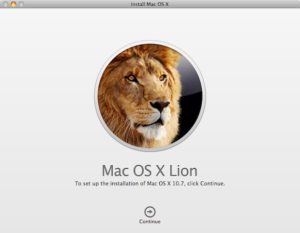Written by Howard Fenton, Senior Technology Consultant at NAPL
Did you hear about the one million downloads of the latest Mac operating system Lion on the first day? Now that some time has passed, we can say that upgrading to Lion has been mostly a success but there are some issues to be aware of.
The bad news is the loss of Rosetta, which is emulation software that allowed users to run older software (PowerPC written applications) on Intel Macs. And there are also some issues reported by manufacturers – the most important issue is from Adobe. For example, at the top of the Adobe list is this: “Java Runtime needs to be installed manually, otherwise applications may behave inconsistently.”
If you have upgraded your software within the last few years, then you’re probably fine because the newer programs have been rewritten to work natively on the Macs using the Intel CPUs. However, if you’re running older applications (older versions of Adobe Creative Suite, Microsoft Office Suite and Quicken 2007) they will not work with Mac OS X Lion. For information about known issues with Lion, go to the Apple, Microsoft, and CultofMac Lion support pages.
Another issue to be aware of is the multiple fees some people have been charged for the upgrade. MacRumors reports that John Christman purchased OS X Lion on July 23, and paid $31.79 after sales tax. His PayPal account was then charged an additional 121 times, for a grand total of $3,878.40. However, when he contacted both Apple and PayPal, each pointed the finger of blame at the other. According to theappera.com “the issue is related to Apple’s new iCloud feature that allows iTunes to download previous purchases. He downloaded 116 apps total, but several apps failed to download and needed to reboot.”
Good News
But there is good news too, including the ability to sync data across a variety of Apple products with iCloud. The entire 4 Gb OS is installed over the internet and if done right you can download one version and use it on multiple devices. To perform multiple installs, the easiest way according to OSX Daily is to download it first, plug an external disk in and copy it (before installing it) and then copy it to other computers.
Lion marks a dramatic change in the appearance of the graphical user interface or GUI from the original icon- folder appearance first created by the engineers at Xerox PARC (Palo Alto Research Center) to a more iOS or iPhone / iPad interface.
Apple’s changes from iOS, include:
- easily-navigable display of installed applications,
- Launchpad (similar to the home screen of iOS devices),
- auto-hiding scrollbars that only appear when they are being used, and
- Mission Control, which unifies Exposé, Spaces, Dashboard, and full-screen applications within a single interface.
One of the smallest changes that people are raving about, is how the desktop returns to how it looked when you quit. A small change that many are complaining about is that the Dock no longer indicates whether an app is currently running. In addition to this, documents auto-save by default so users don’t have to worry about manually managing their documents.
Personally, as a former production manager, I have learned that sometimes the risks outweigh the rewards. Therefore, I am not an early adopter. Typically I wait until the first bug fixes are released in the “.1” version. Are you an early adopter or a “.1” version person?
Howard Fenton is a Senior Technology Consultant at NAPL. Howie advises commercial printers, in-plants, and manufacturers on workflow management, operations, digital services, and customer research. He’s a paid contributor to this blog.
——-



One more issue which I facing after upgrading to lion was “Kernal Panic”. That is now solve by Apple they have accepted that “very small number of Seagate 1TB hard drives used in 21.5-inch and 27-inch iMac systems, may fail under certain conditions. These systems were sold between May 2011 and July 2011 .”
And they are now ready to provide free exchange of those drive. Read full info about kernal panic .
Thats why I am thinking they are decently working for these issues also.
Great point Nik about the “Kernal Panic” attacks. According to my research it looks like it is associated with the NVIDIA GPU graphic cards in the 2010 Macbook Pros. There is one report of a workaround which says “Navigate to ~/Library/Preferences/ByHost/, delete any files that contain “windowserver,” and reboot the machine. The procedure may need to be repeated if you regularly connect to an external monitor once it is also connected.”
But a bigger issue however is the issue of a Trojan Horse that poses as Adobe Flash Installer. According to Cult of Mac this application appears like it is a Adobe installer of Falsh but actually redirects Google searches to a site in the Netherlands and is poised to send pop-up ads. The take home story only install Flash form the offical Adobe site.